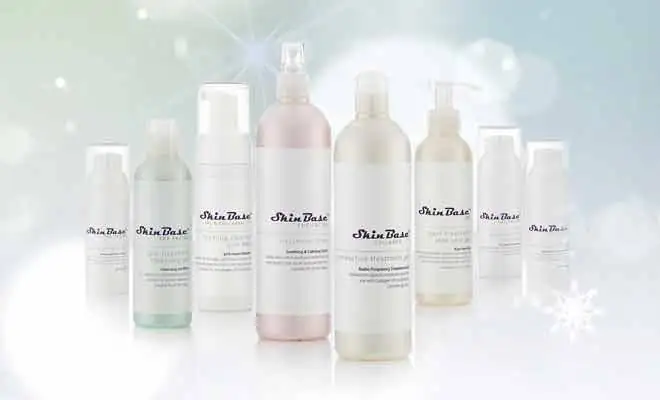Lactic acid is a well known and widely popular skincare ingredient, and for good reason. It is a gentle, effective, water soluble AHA, with fabulous anti-ageing and hydrating properties. Read on to take a deep dive into lactic acid.
What Is Lactic Acid?
Lactic acid (LA) is an exfoliating alpha-hydroxy acid that forms when certain foods, particularly dairy products, go through the process of fermentation. Most LA used in skincare these days is made synthetically, in a lab. So, it is suitable for vegans and those intolerant to lactose, as it is not derived from milk.
How Does Lactic Acid Work?
Lactic acid is a chemical exfoliant that rids the skin of dead cells and debris by dissolving the bonds that hold them together. As a result, you can benefit from a visibly smoother, brighter appearance, with minimised fine lines and pigmentation.
When Did Lactic Acid Originate In Skincare?
Stories suggest lactic acid usage in skincare dates back to the ancient egyptians. Cleopatra was thought to maintain glowing, youthful skin by bathing in donkey milk. The fermentation process of soured milk produces LA, resulting in smoother skin post-bath. While people still have milk baths, it can be much easier to incorporate lactic acid into your skincare routine in 2024.
What Is The Skin’s Natural Moisturising Factor?
The outer layer of the skin, often referred to as the epidermis or the stratum corneum, is made to protect from external damage. It keeps the good things in and the bad things out. The skin’s natural moisturising factor (NMF) is a part of this outer layer. It makes up 20-30% of the dry weight of the epidermis.
The NMF is essential to healthy, plump, hydrated skin. The Natural Moisturising Factor contains a range of humectants. Including lactic acid, amino acids, hyaluronic acid, ceramides and peptides, to keep the skin moisturised and the barrier strong.
Over time, the NMF decreases in efficiency, resulting in dryer, more irritated skin. It can also be affected by UV rays and inflammatory skin conditions, such as eczema and acne. So, it is useful to enhance the effectiveness of your skin’s natural moisturising factor by incorporating the beneficial humectants topically into your skincare routine. So, let’s find out how LA can be used.
How Do I Use Lactic Acid?
Lactic Acid can be applied to the skin in many forms. Cleansers, serums, peels, etc., it depends on your own preferences when choosing a product. LA is gentler and milder than other AHA’s. such as glycolic acid, you should still take care to follow the skincare instructions on your products, including not using lactic acid too frequently.
Exfoliation is incredibly beneficial to the skin, but over-exfoliation can negatively affect the skin, causing damage and irritation. As LA resurfaces the skin, it is even more important that you apply SPF after applying LA, and avoid exposing your skin to direct sunlight as much as possible.
What Do I Need To Know About Molecular Size?
Lactic acid acts more gently on the skin than other AHAs do for a reason. LA molecules are larger, so they do not penetrate as deep into the skin. Therefore, you can achieve effective, surface-level benefits while avoiding irritation.
What Should My Skincare Label Say?
When looking to invest in LA skincare for at home use, it is important to choose a product with a LA concentration of 10% or less. If you are new to AHA’s, a 5% lactic acid is a good place to begin to allow your skin to adapt to the changes while still achieving results. It is also important to check the pH levels of the LA you are using in your routine. For the best results, the pH should ideally be between 3 and 4.
Lactic Acid & Ageing Skin
Lactic acid is a powerful antioxidant that works to offset the damage to skin caused by environmental pollutants. Heavy metals, for example, are environmental pollutants that release collagen-degrading enzymes and damage other proteins, lipids and DNA within the body. Collagen is key to maintaining healthy, youthful skin. Lactic acid suspends the damaging enzyme activities and neutralises free radicals, so it is a great choice of AHA for mature skin.
Several studies have also proven LA to be incredibly effective at improving signs of sun damaged skin. Concentrations of 8-12% are best used to combat sun damage concerns such as fine lines, wrinkles and rough texture.
Ageing Skin & Acids
Though mature skin is often more sensitive, and sensitivity and exfoliating acids do not sound like they pair together very well, LA is not a concern as it works gently and actually strengthens the skin barrier, encouraging the production of ceramides. However, it can still be daunting adding new products to a skincare routine. So, if you would like to leave it to the professionals, we’ve got the perfect treatment for you.
SkinBase Hydro
SkinBase Hydro is designed to cleanse, exfoliate, purify, hydrate and revitalise the skin, with the use of fabulous ingredients and a vacuum handset. Hydro is non-invasive and non-surgical, so you can achieve fantastic results and get right back to your day.
SkinBase Hydro & Ageing Skin
SkinBase Hydro involves a choice of three serums, to personalise the treatment to your specific skin concerns. The ‘renewing’ serum contains powerful anti-ageing ingredients, such as Lactic acid, that improve the appearance of fine lines and wrinkles while also helping to hydrate the skin and reduce inflammation.

